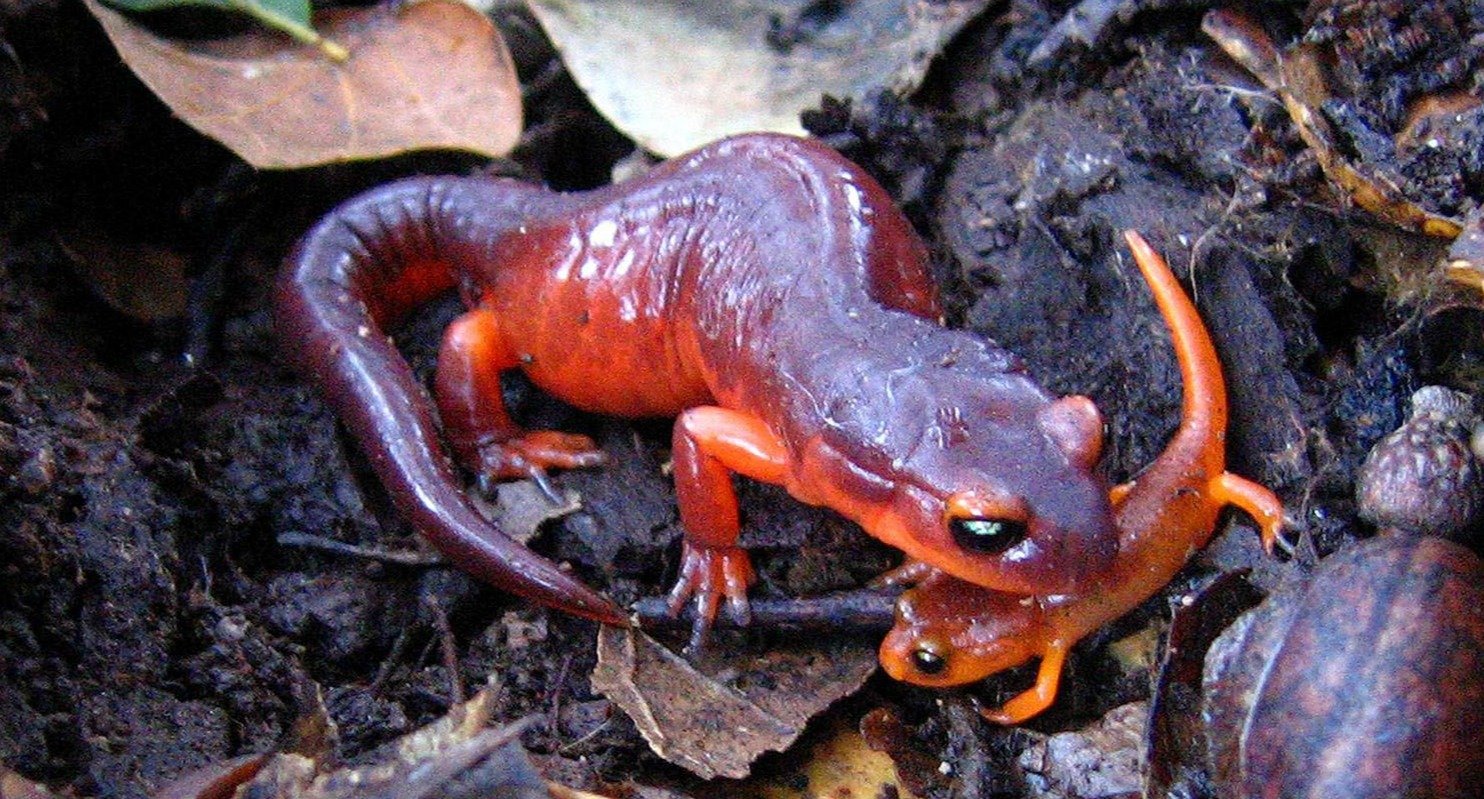It’s salamander season!
Although similar in shape, salamanders are not the same as lizards. In fact, they are amphibians, which means their skin is moist, and they are typically found in dark, damp environments. Although these creatures are quite gentle and non-aggressive, there are a few good reasons not to pick them up – including the fact that they are slimy and highly toxic.
Keep reading for some interesting information about salamanders found in Santa Clara Valley:
1. What kinds of salamanders live in the South Bay?
- There are over 650 known species of salamander, and they can be found on every continent except Australia and Antarctica. In the Santa Clara Valley specifically, there are five main species of salamander you may come across: the California tiger salamander, the California newt, the slender salamander, the arboreal salamander, and the yellow-eyed ensatina.
- More than 40 percent of salamanders in the US are threatened with extinction, including the California tiger salamander. Protecting its habitat is critical to prevent extirpation (extinction from a specific area) or extinction entirely.
.jpg?width=619&name=California%20Tiger%20Salamander%20-%20John%20Cleckler%20CTW%20(USFW).jpg)
California tiger salamander (John Cleckler, USFWS)
2. What do they look like?
- Salamanders can range in size from 3-8 inches in length
- They’re often lungless! The California newt does have lungs, but the California tiger salamander, slender salamander, and arboreal salamander are all lungless, and breath through the pores in their skin. This is another reason not to pick these critters up, as lotion or sunscreen can harm them.
- All newts are salamanders, but not all salamanders are newts, and there are a few key differences. For example, newts have webbed feet and a paddle-like tail, while salamanders typically have longer and more rounded tails with well-developed toes.
Key characteristics:
- The California tiger salamander is black with bright yellow spots, and is highly endangered.
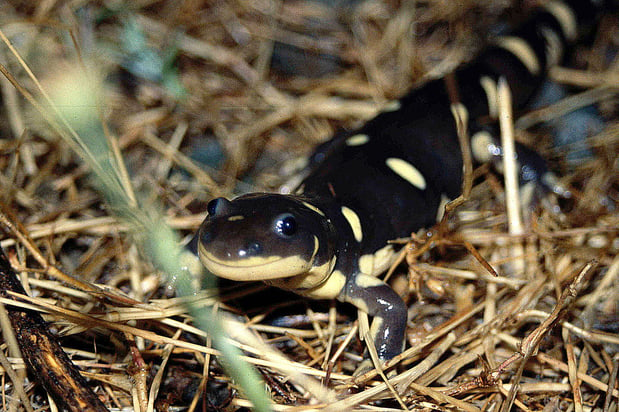
California tiger salamander (Michael Van Hattem, USFWS)
- The California newt varies in color, from a yellowish brown to a dark brown color skin, with a pale yellow or orange belly. This newt is the most poisonous of the bunch.
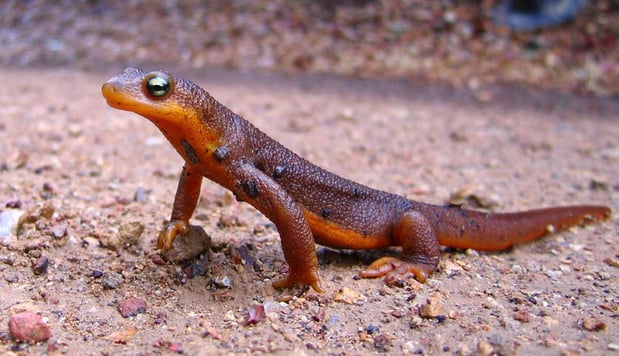
California newt (Cait Hutnik)
- Slender salamanders, as their name suggests, are very thin, almost worm-like. They leap away from their predators to then try and hide.
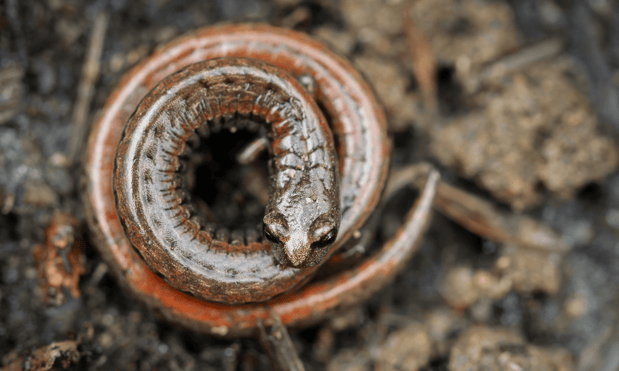
Slender salamander (Elena Oey)
- Arboreal salamanders are dark brown or gray, usually with yellow or white spots. These buddies have sharp teeth and can bite.
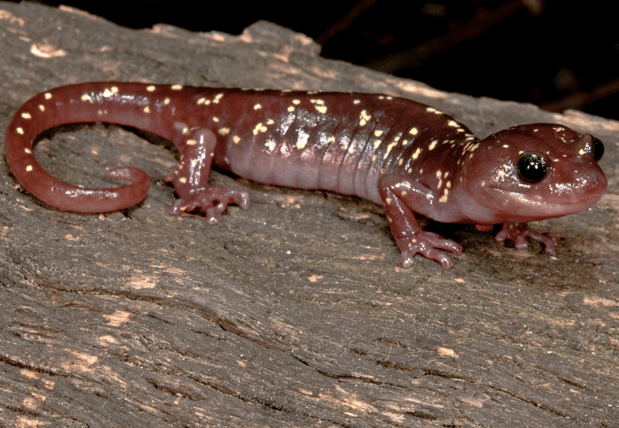
Arboreal salamander
- The yellow-eyed ensatina evolved its yellow eyes and brightly colored orange belly to resemble the more toxic California newt - as a way to discourage predators! You can distinguish them from California newts as the newts have bumpy skin and clearer eye color definition.
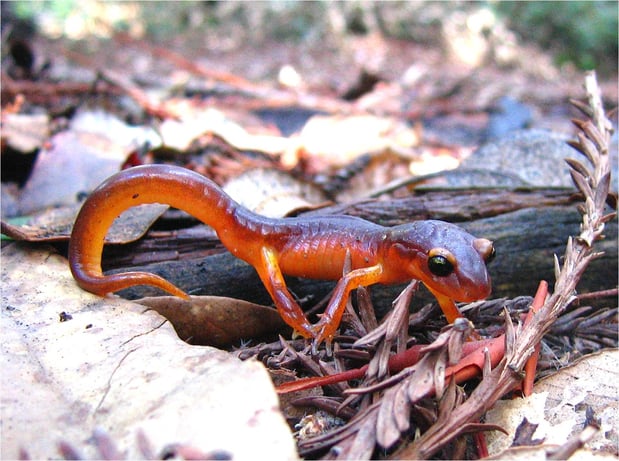
Yellow-eyed ensatina (Cait Hutnik)
3. What do salamanders eat?
- Grub may not be your cup of tea, but these little cuties typically snack on bugs, young snails, crickets, mites, spiders, beetles.
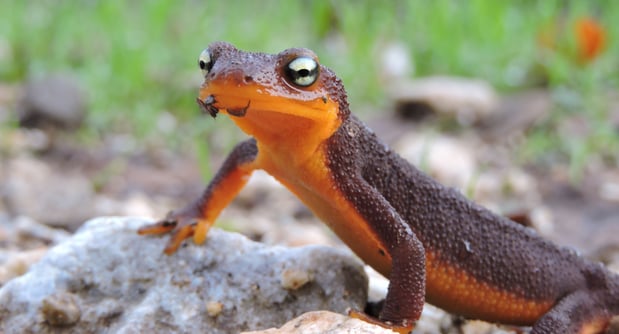
California newt (Cristina Schell)
4. Where do they live?
- Adult salamanders know how to work smarter, not harder, and spend most of the year underground in burrows made by other animals like ground squirrels. This tactic is also used by the burrowing owl, another native species found in Santa Clara Valley.
- Many think of salamanders as aquatic species, but California tiger salamanders found in Santa Clara Valley are only found in ponds during breeding season. Ideal habitat for them are seasonal ponds near upland areas of healthy grasslands and oak woodlands.
- The slender salamander prefers moist areas on lands instead of ponds.
- The arboreal salamanders prefer dense, moist forests, as they can climb trees up to 60 feet above the ground!
- The California newt prefers slowly moving streams for breeding, and moist areas for its adult habitat.
- Ensatinas spend most of the dry season underground in burrows and beneath rotting logs and leaf litter. After the first rains, they make their way above ground.
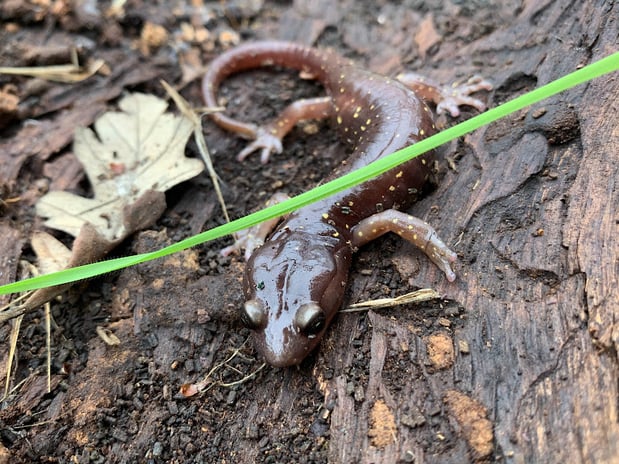
Arboreal salamander (Kat Hill)
5. Are salamanders poisonous?
- Yes – all salamanders are poisonous. If you were to accidentally ingest their toxins, it can make you very sick.
- California newts are quite poisonous because their skin secretes tetrodotoxin, the same toxin found in puffer fish, making them deadly to animals that eat them.
- If you see salamanders out on the preserves, like with all wild animals, we ask that you please keep a respectful distance.
- Though they are small and gentle by nature, getting picked up can stress them out and cause them to lose energy unnecessarily.
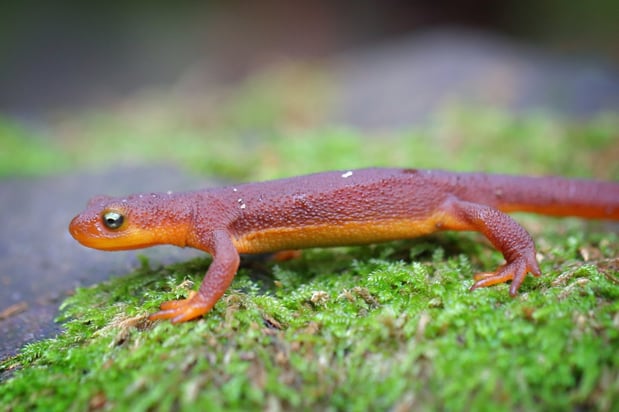
(Toxic!) California newt (David Mauk)
6. How do salamanders reproduce?
- Winter is mating season for these critters, so once the region begins getting rain, some of these salamanders begin to emerge from their burrows and head towards the streams, lakes, and seasonal ponds that are beginning to fill up to find their mate.
- Seasonal ponds are better for the California tiger salamanders because ponds that are dry most of the year grow less vegetation than ones that are wet year-round – which means fewer places for predators to hide!
- They typically travel 1-3 miles to get to their breeding destination, and they visit the same breeding pond every year.
7. Can I keep a salamander as a pet?
- Salamanders make popular pets; however, it is never okay to remove them from the wild. This can harm local populations and disrupt local food chains.
- Similarly, never release a pet salamander into the wild. This can introduce diseases that are harmful to native wildlife populations, and exotic species may outcompete native species. If you need help rehoming your pet salamander - please reach out your local shelter or animal care center.

Yellow-eyed ensatina salamanders (Cait Hutnik)
8. How can I help local salamanders at home?
- Salamanders are most threatened by habitat destruction, and water is critical for their habitat. Conserving your water usage and minimizing your carbon footprint are some of the most beneficial ways to promote healthy habitats for salamanders.
- Taking shorter showers, turning the faucet off while brushing your teeth and between washing dishes are just a few simple ways you can reduce your water usage. Click here for more water saving tips!
- To reduce your carbon usage, try taking public transportation instead of driving to your next destination, eating more plant-based meals, or composting your food waste.
- And feel free to do more research to find ways to conserve water and carbon that work best for you!
Salamanders are just one of the many animals that depend on open space in Santa Clara Valley. These delicate creatures are sometimes referred to as "indicator species" because they are highly sensitive to changes in their environment. This means local population numbers may be linked to the health of local watersheds. They also play a valuable role in the ecosystem, contributing to the larger food chain and promoting biodiversity.
Thank you for doing your part to respect and protect these creatures and the places they call home.
